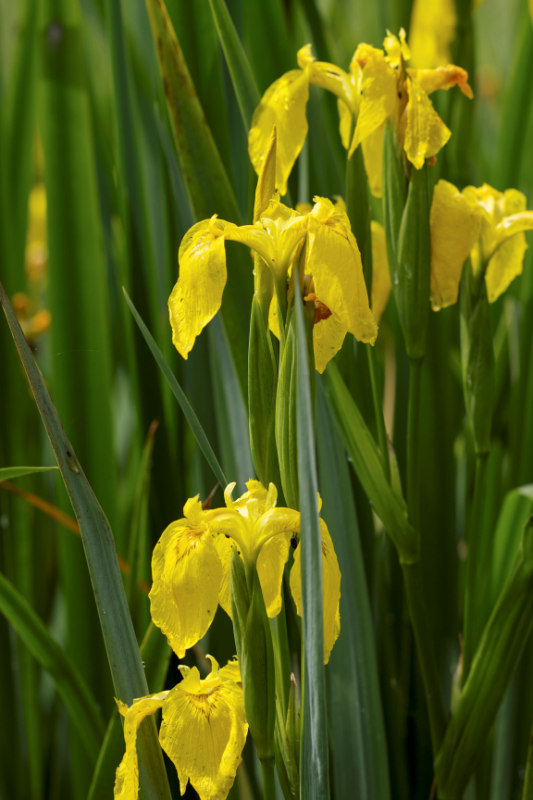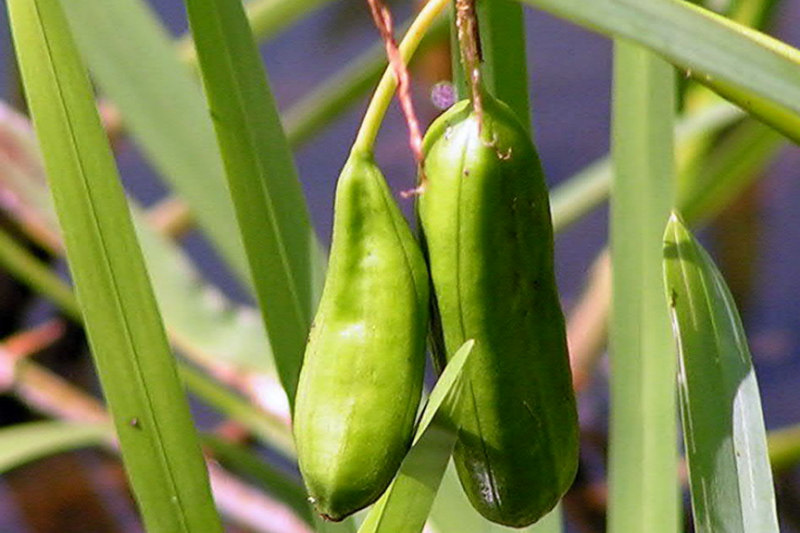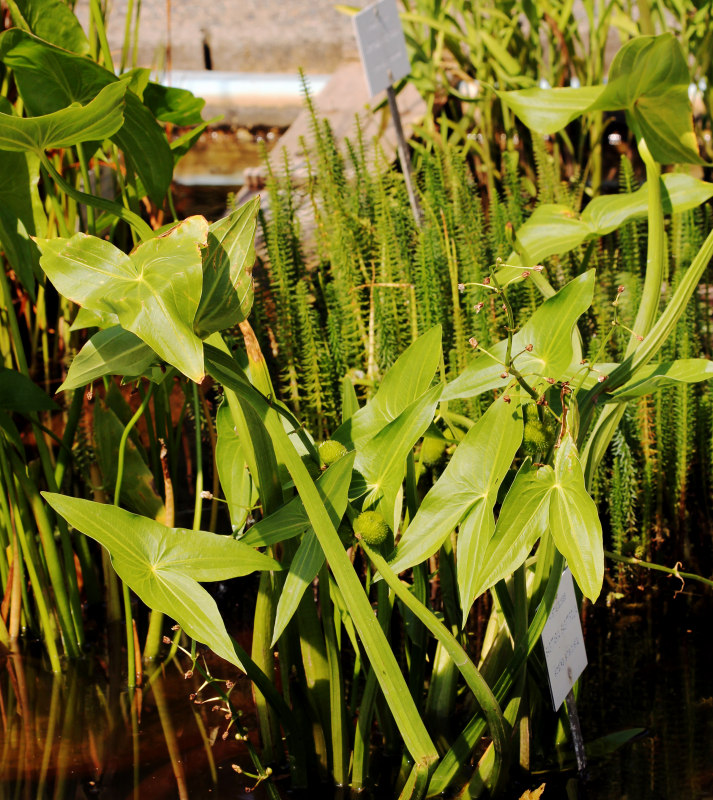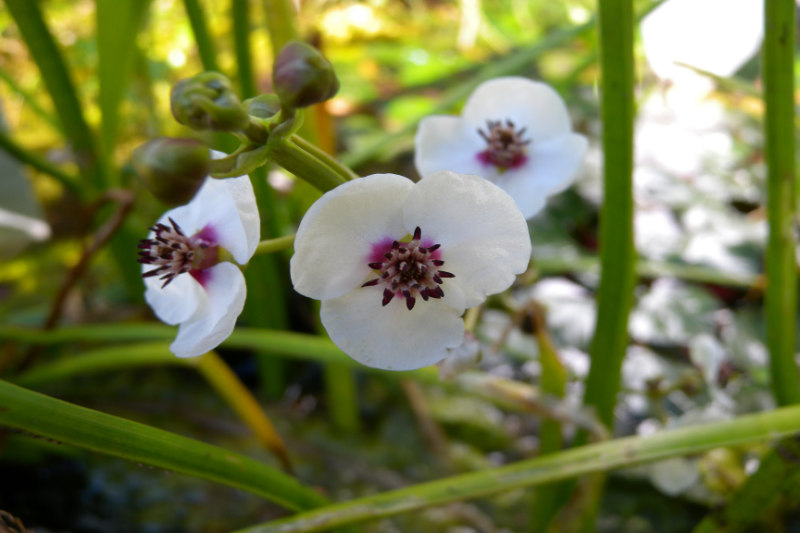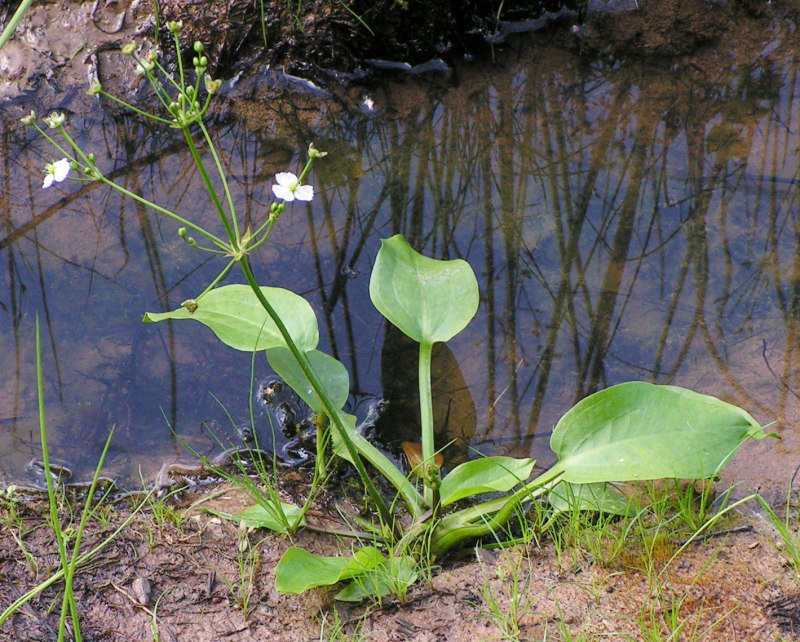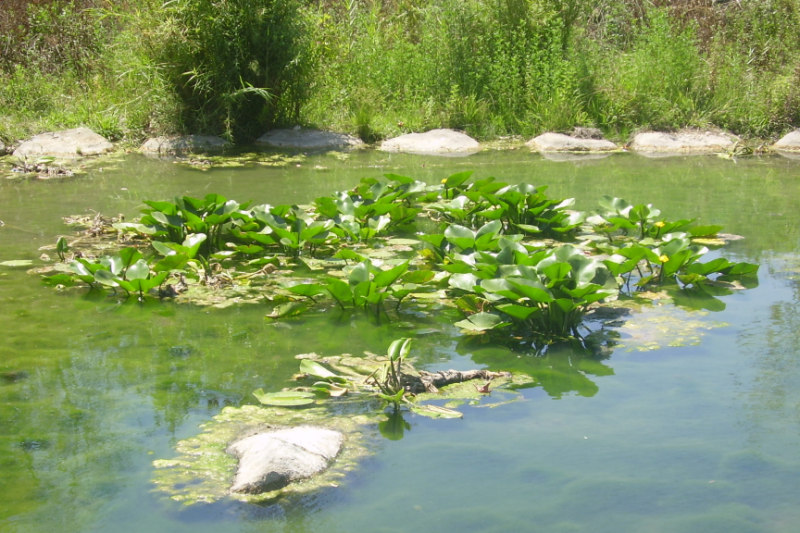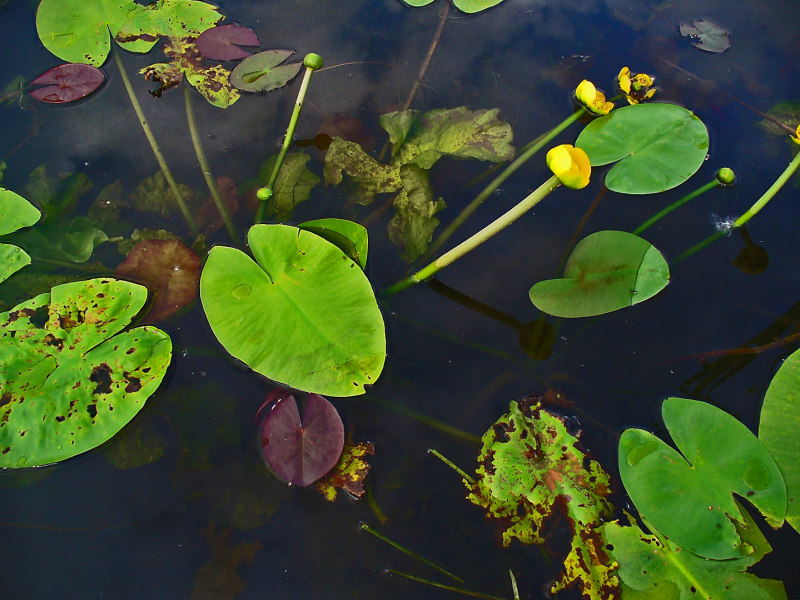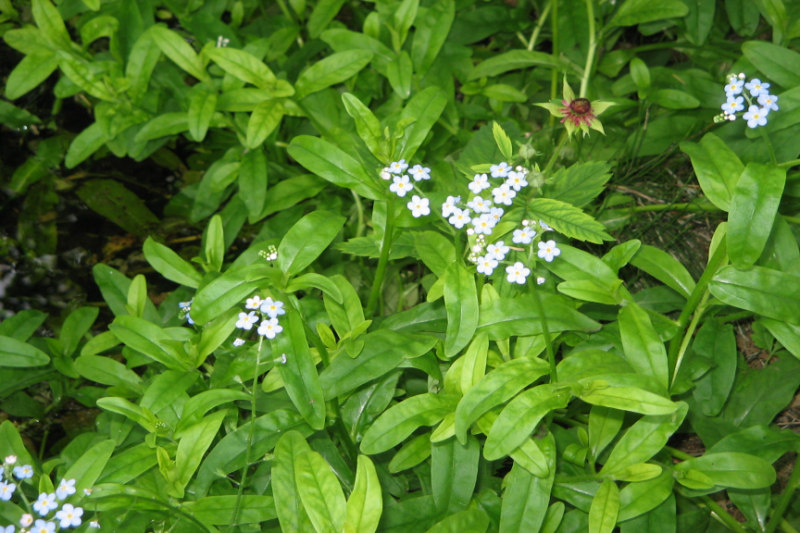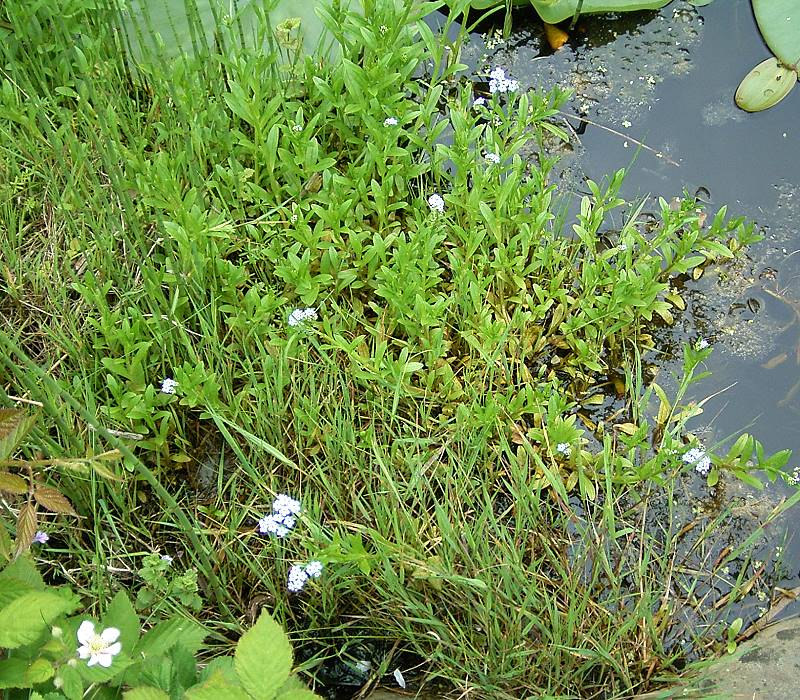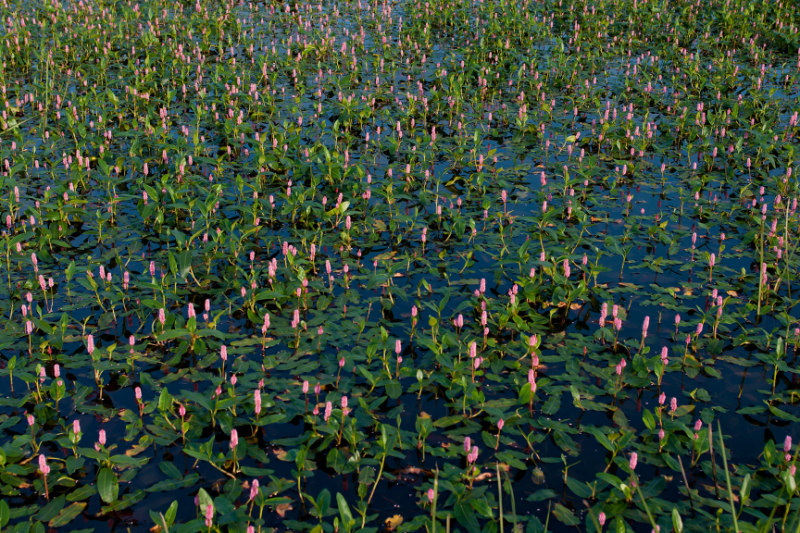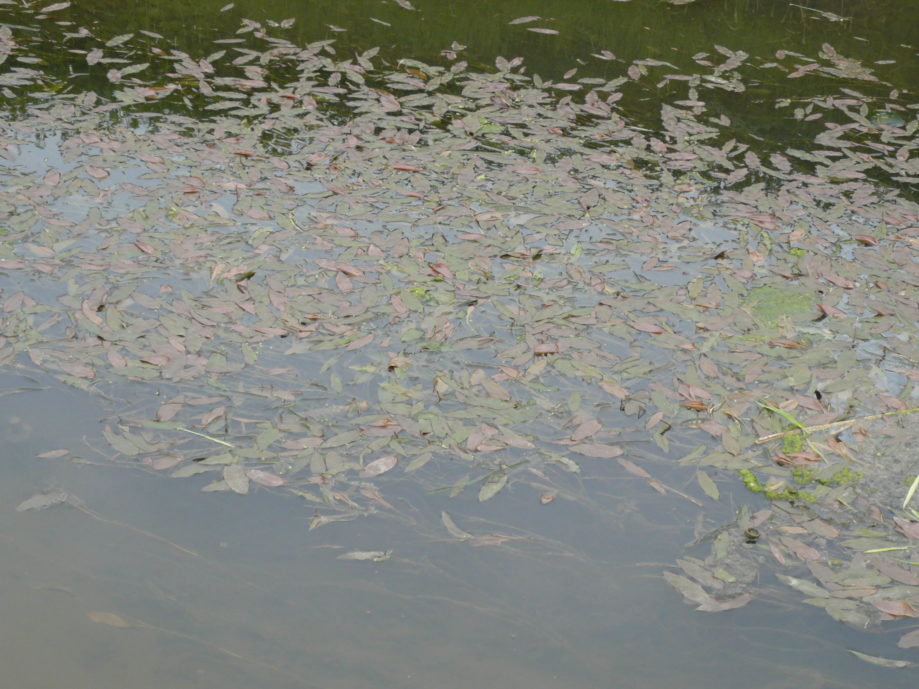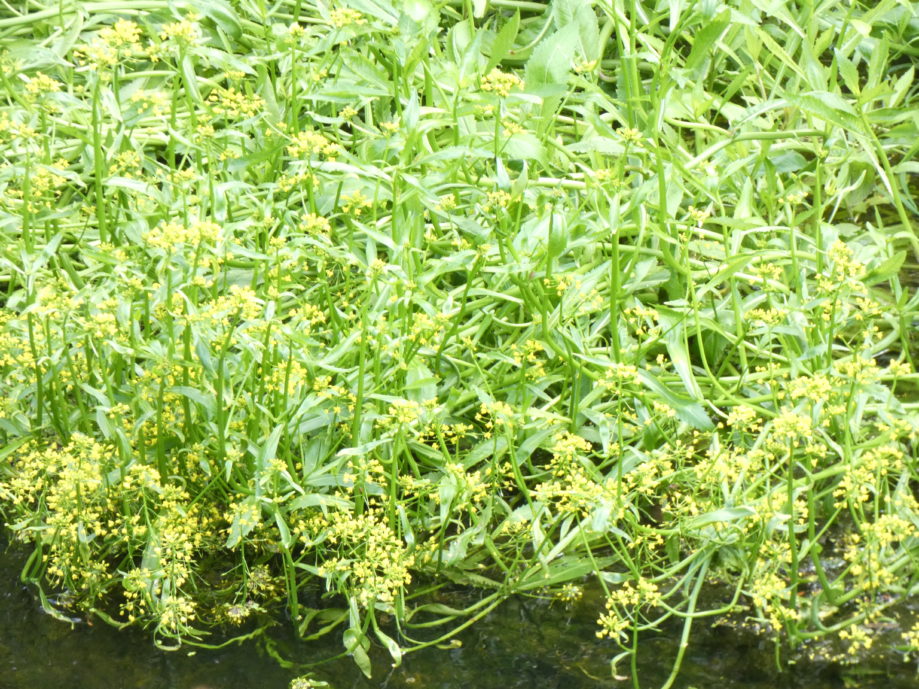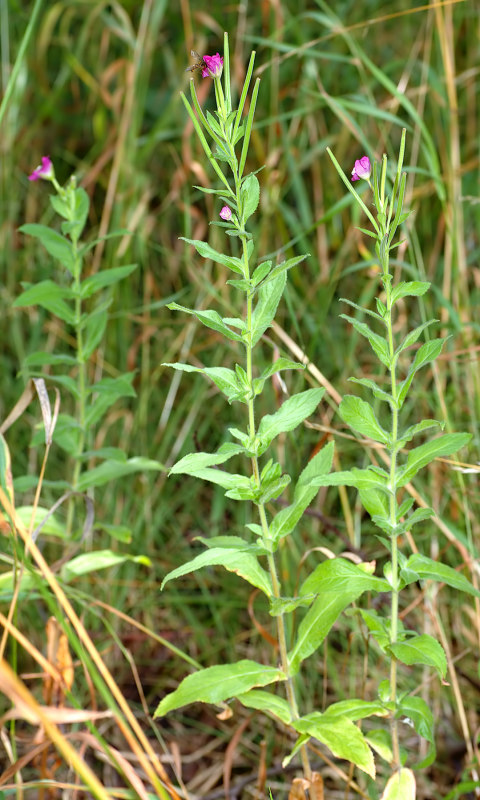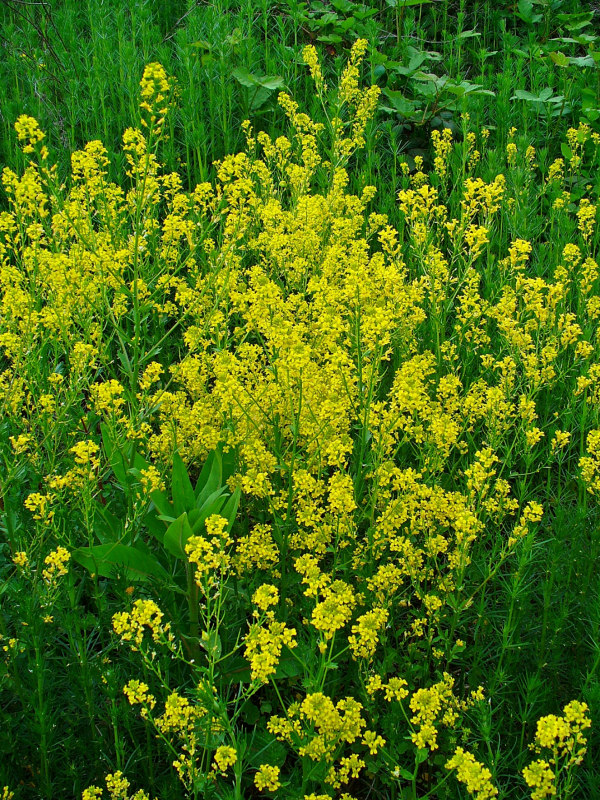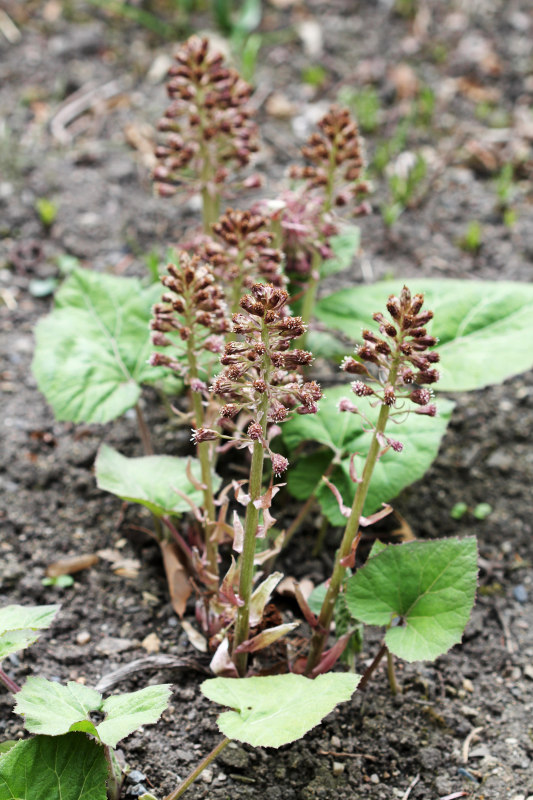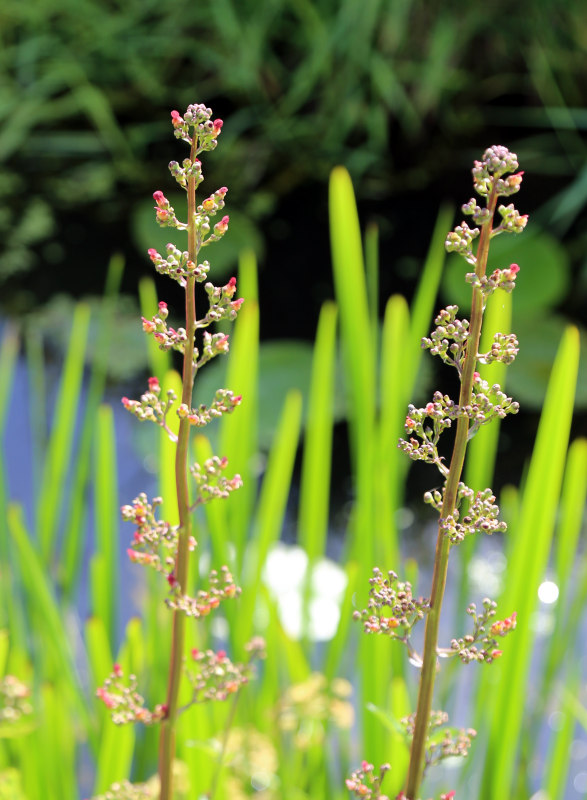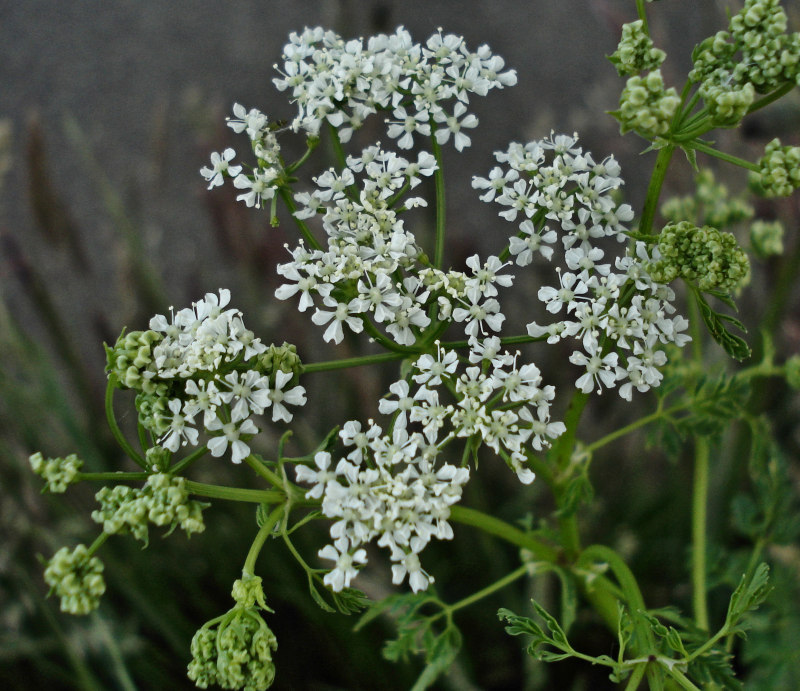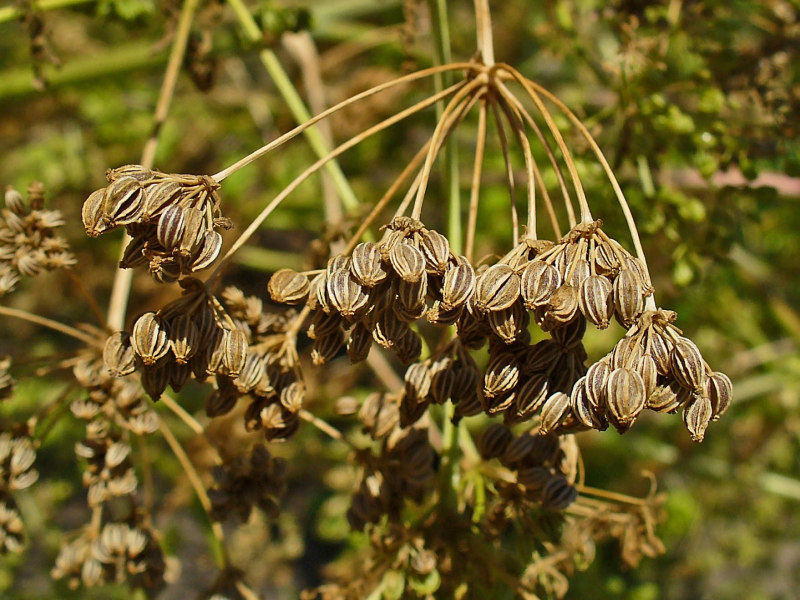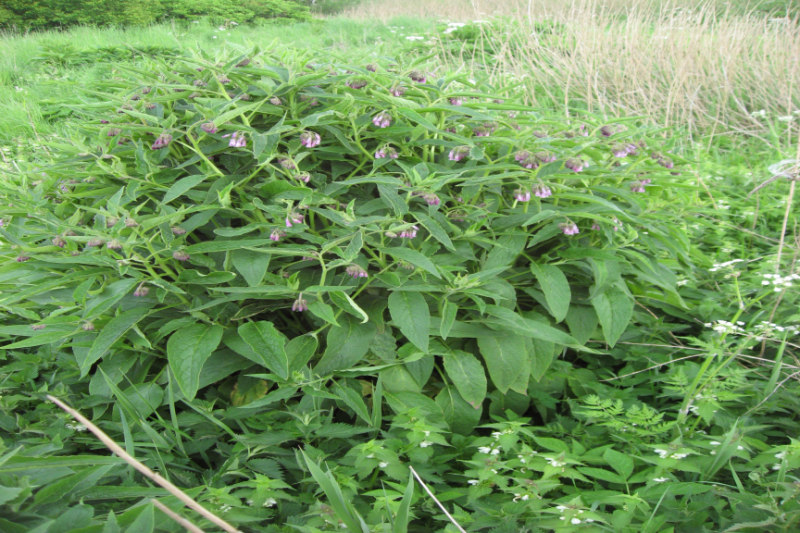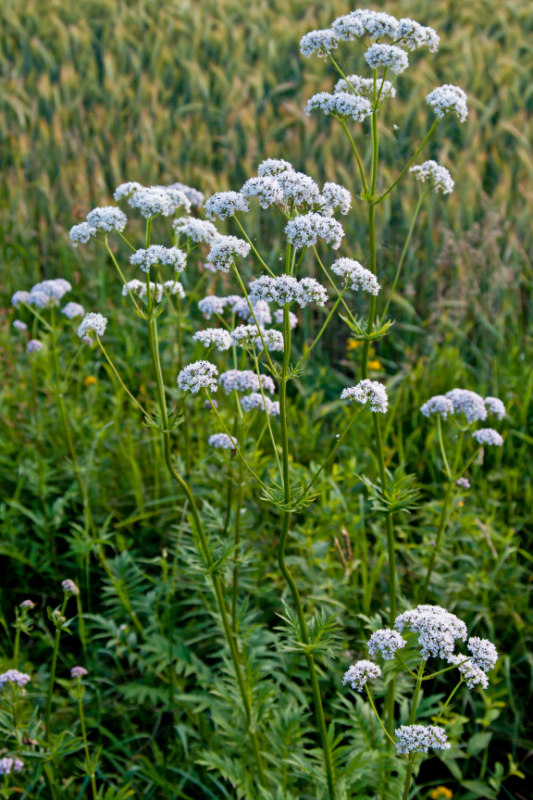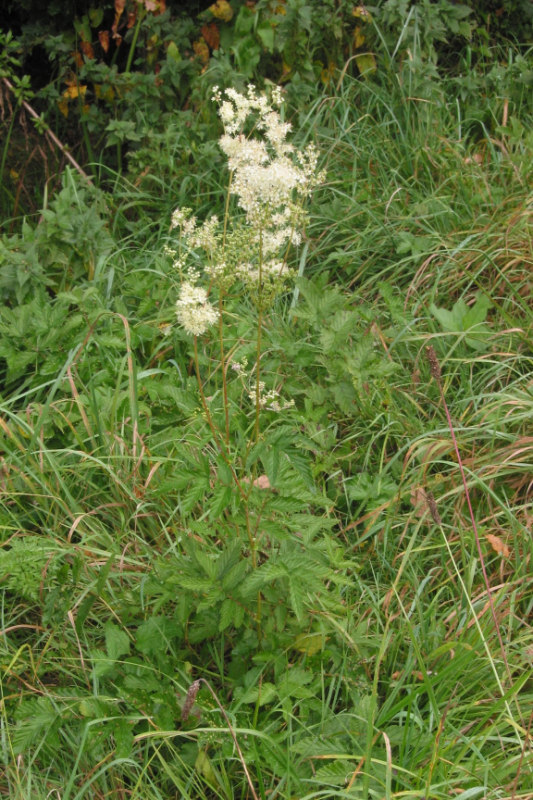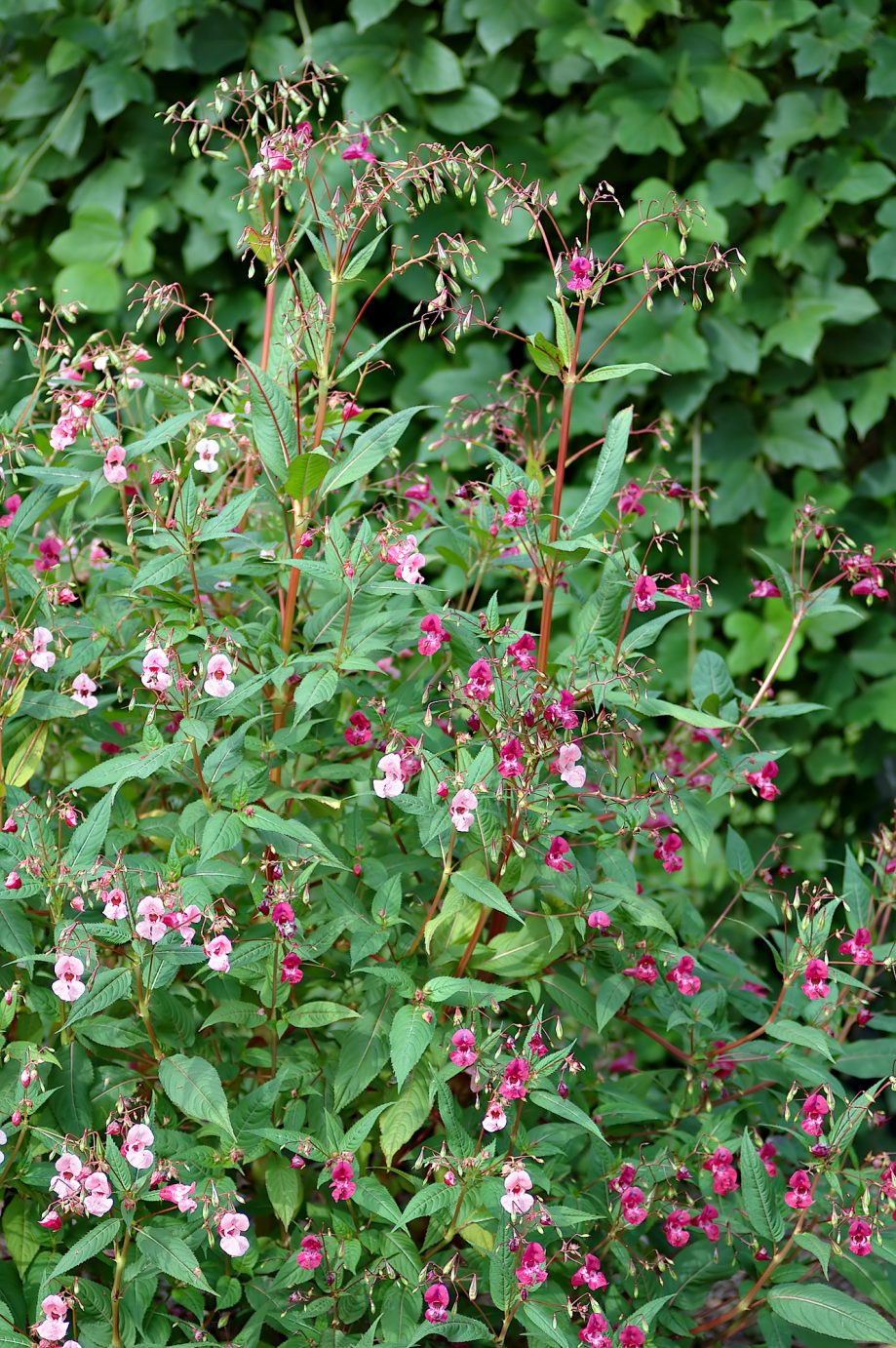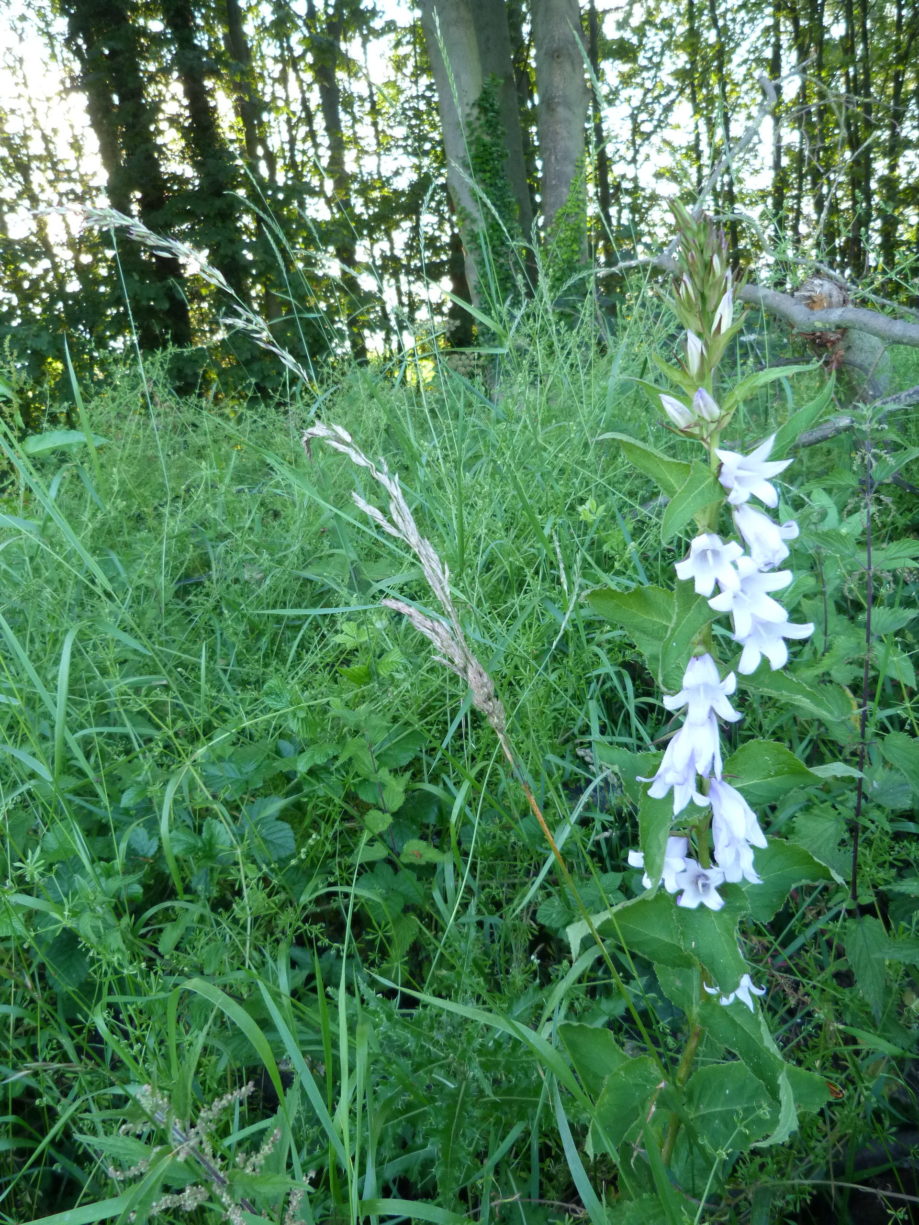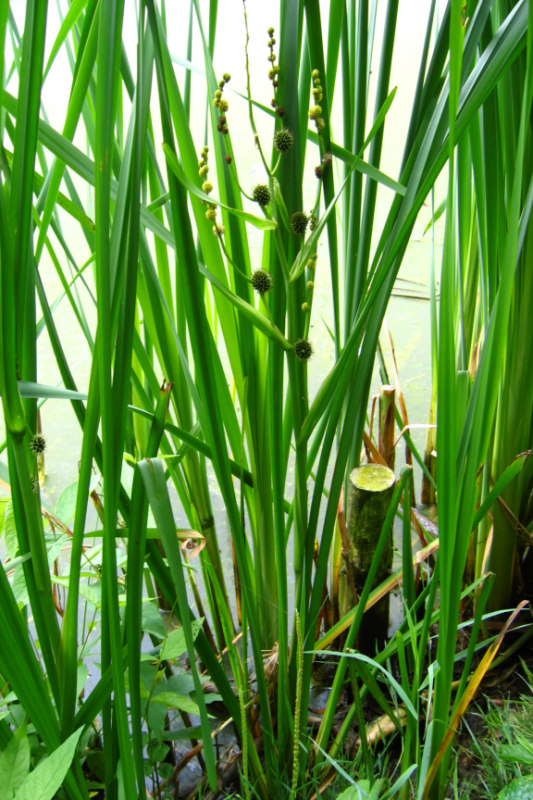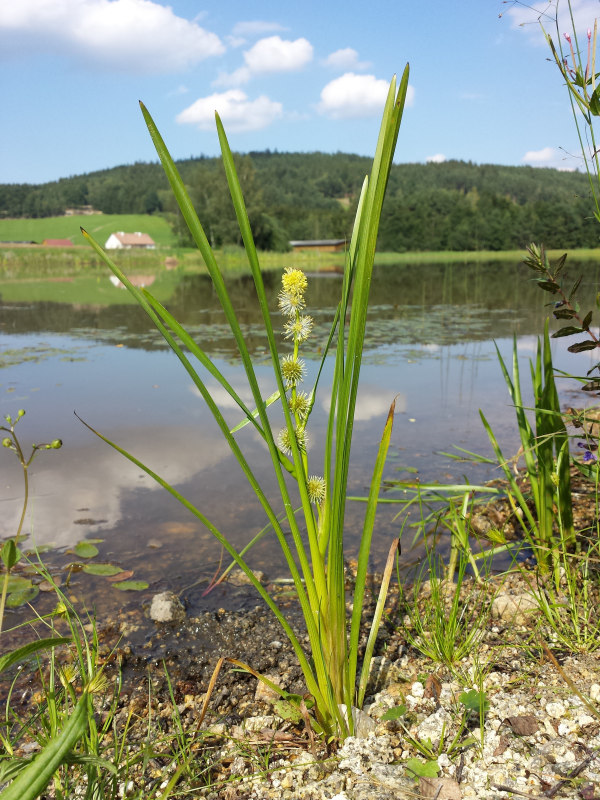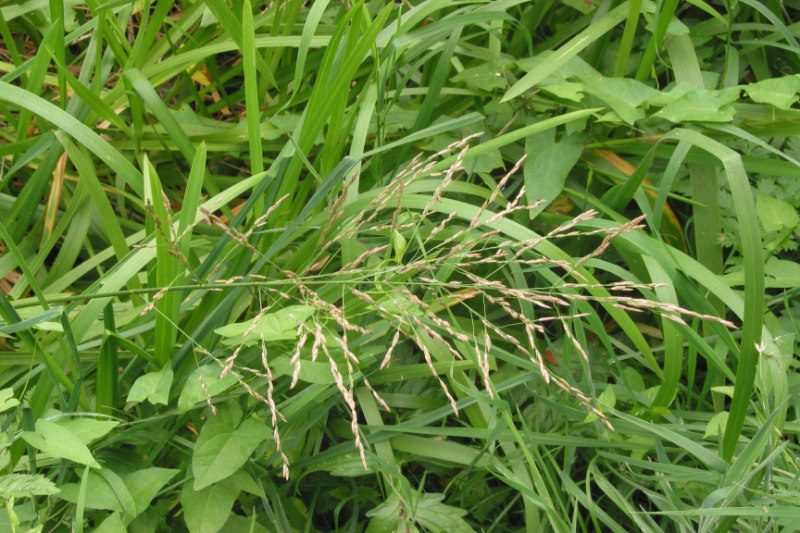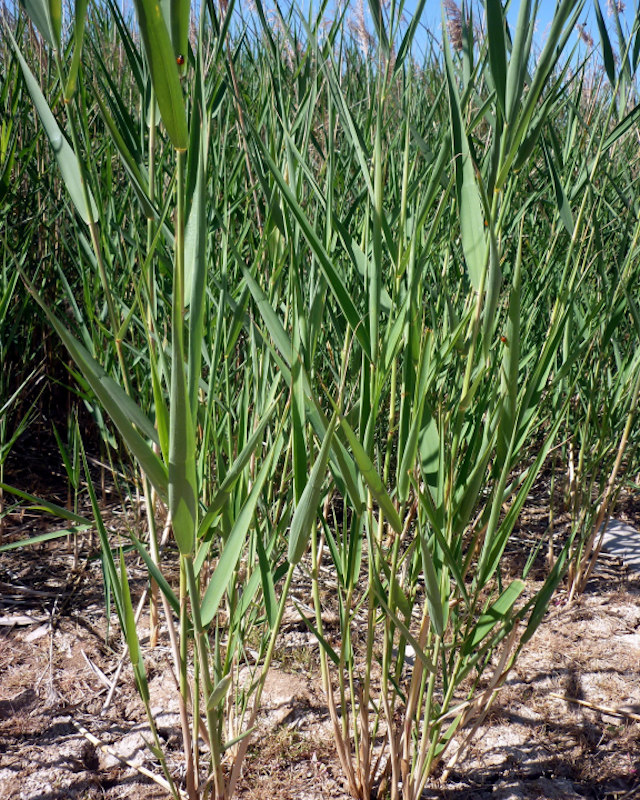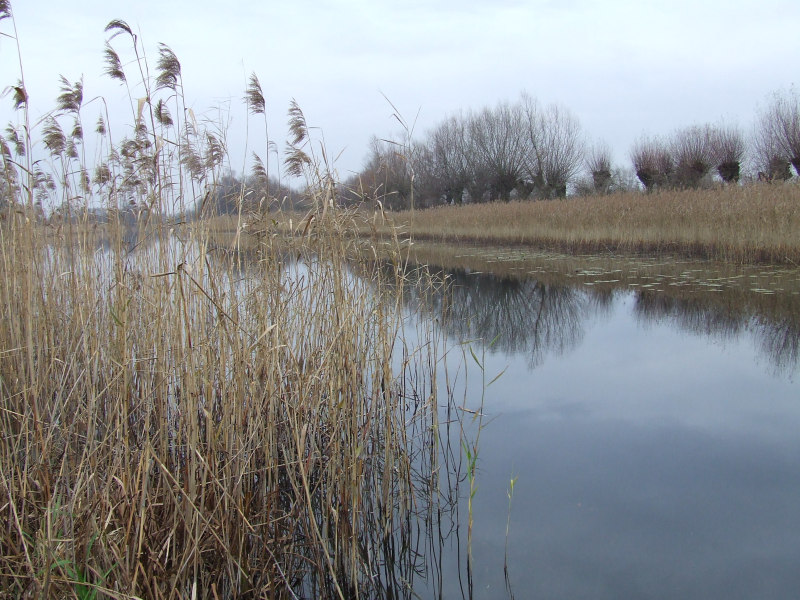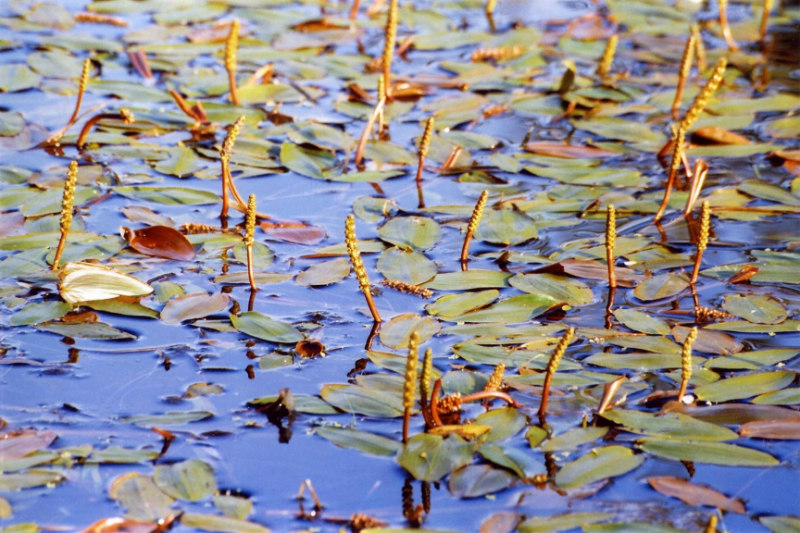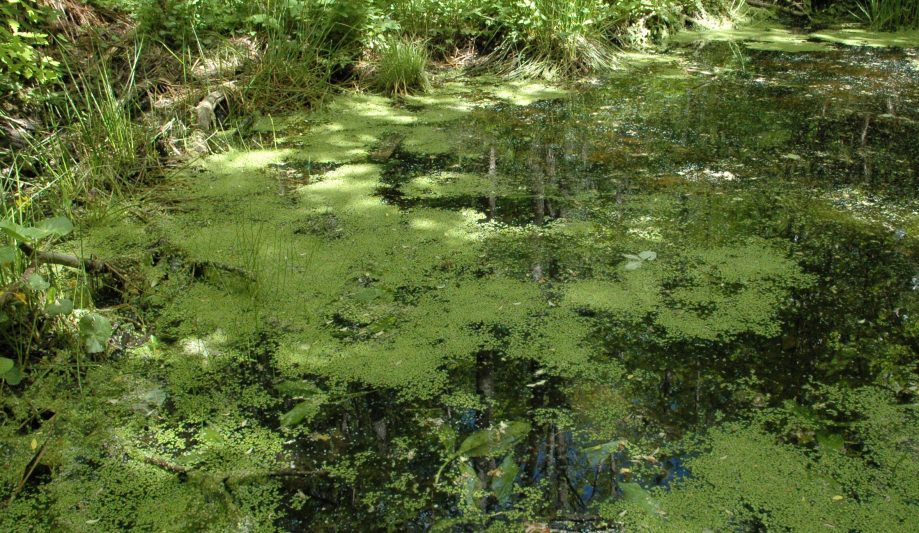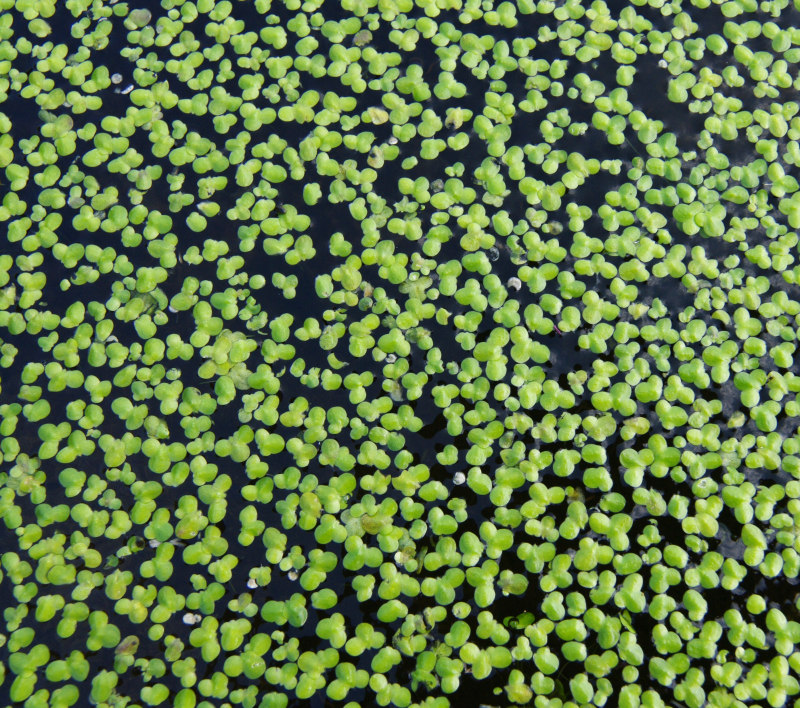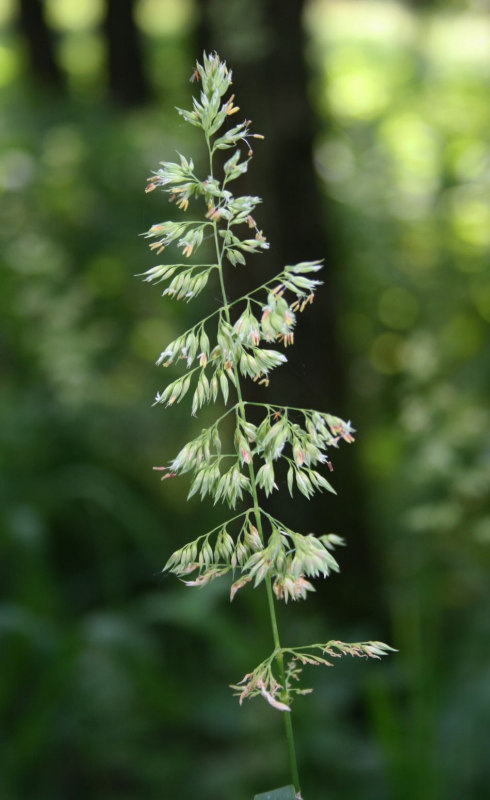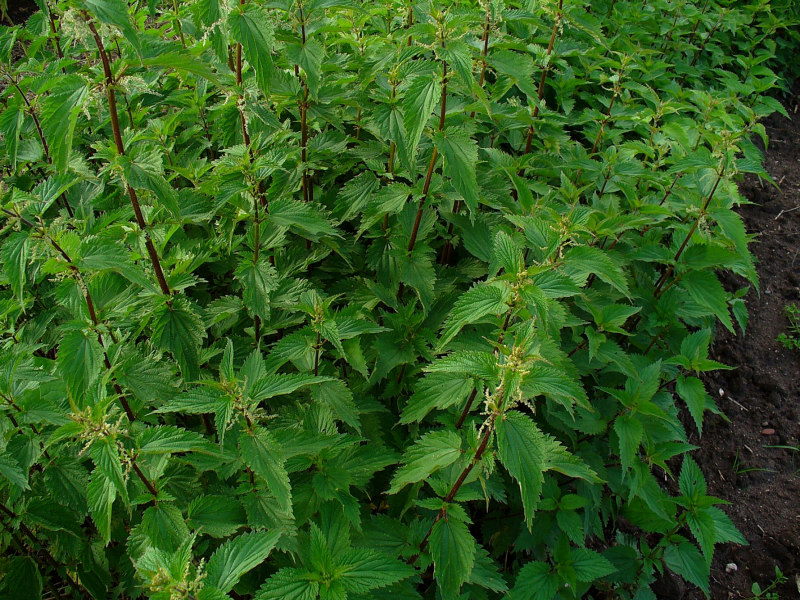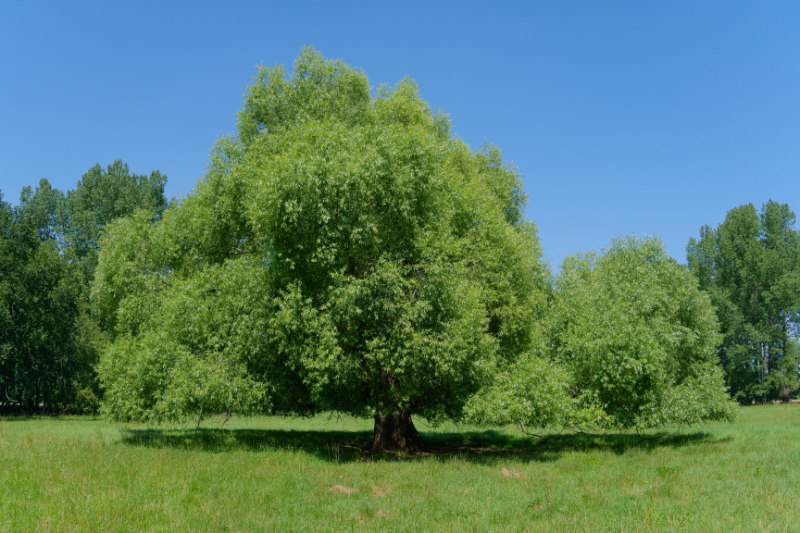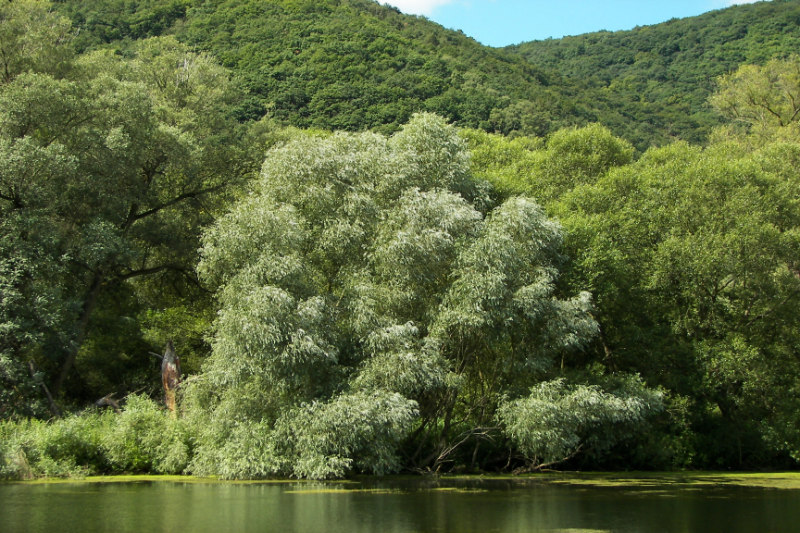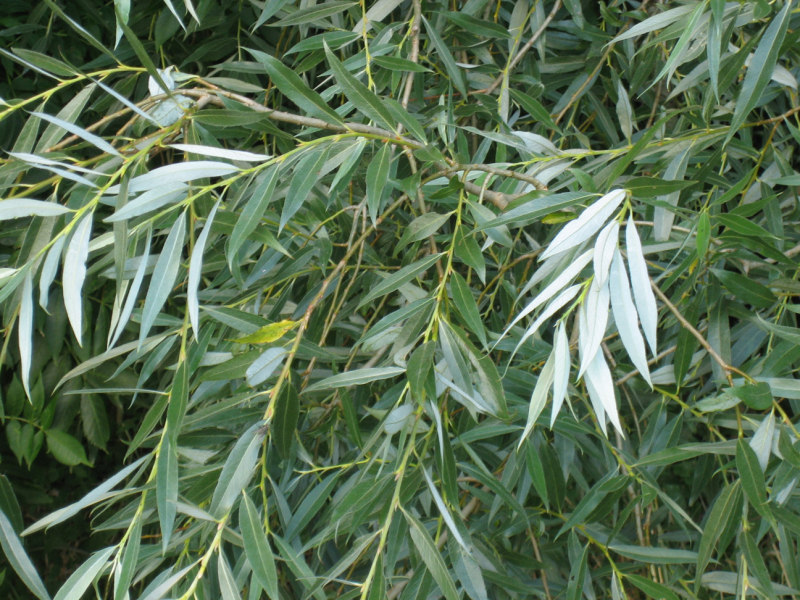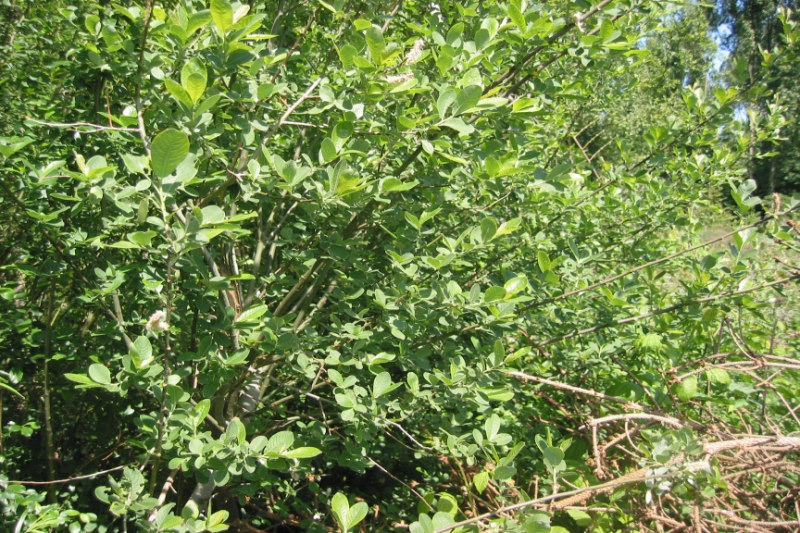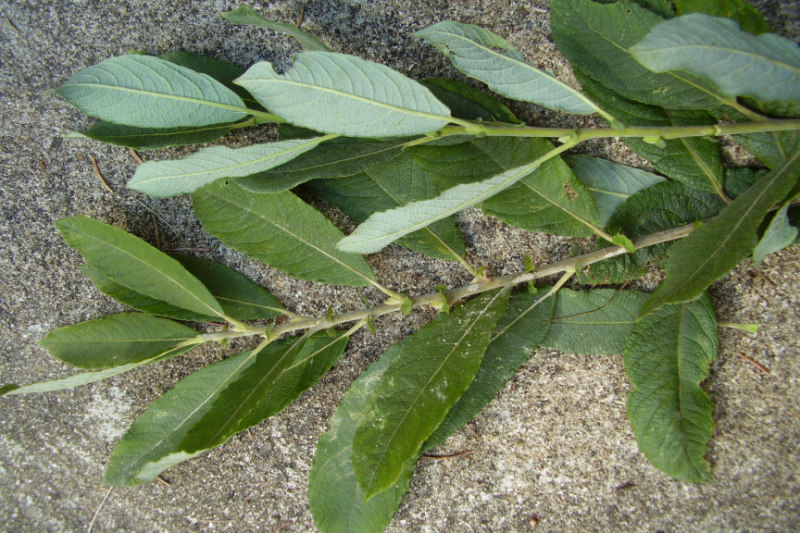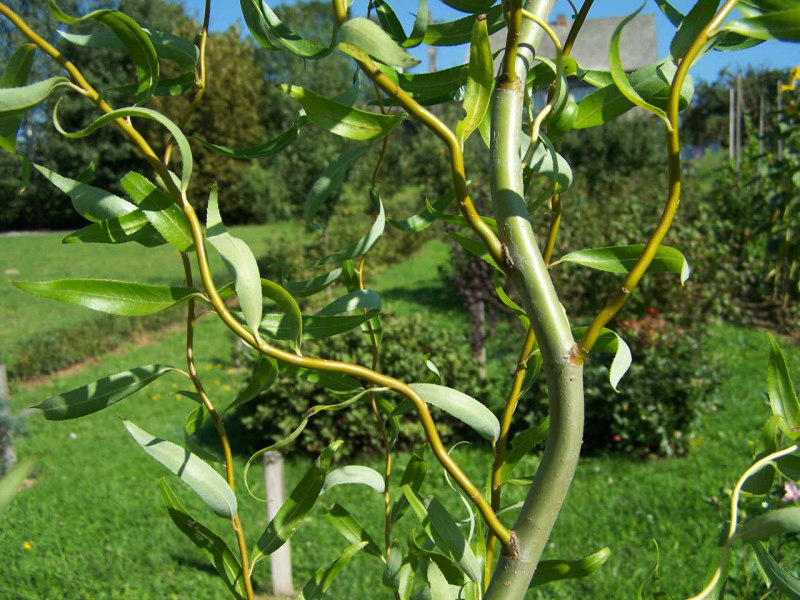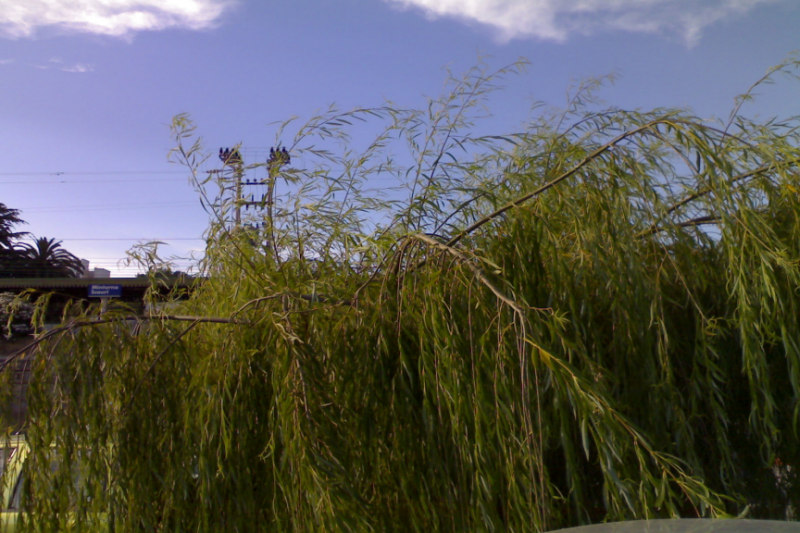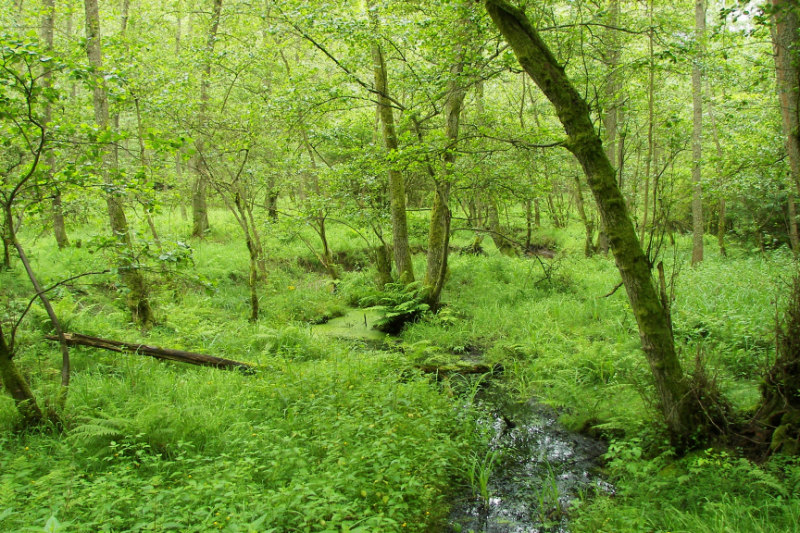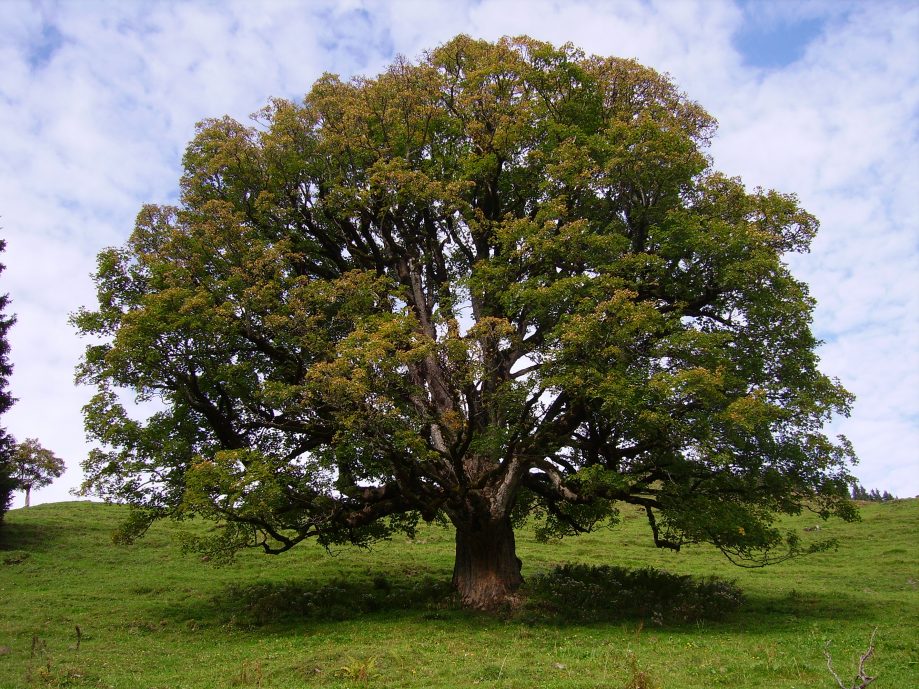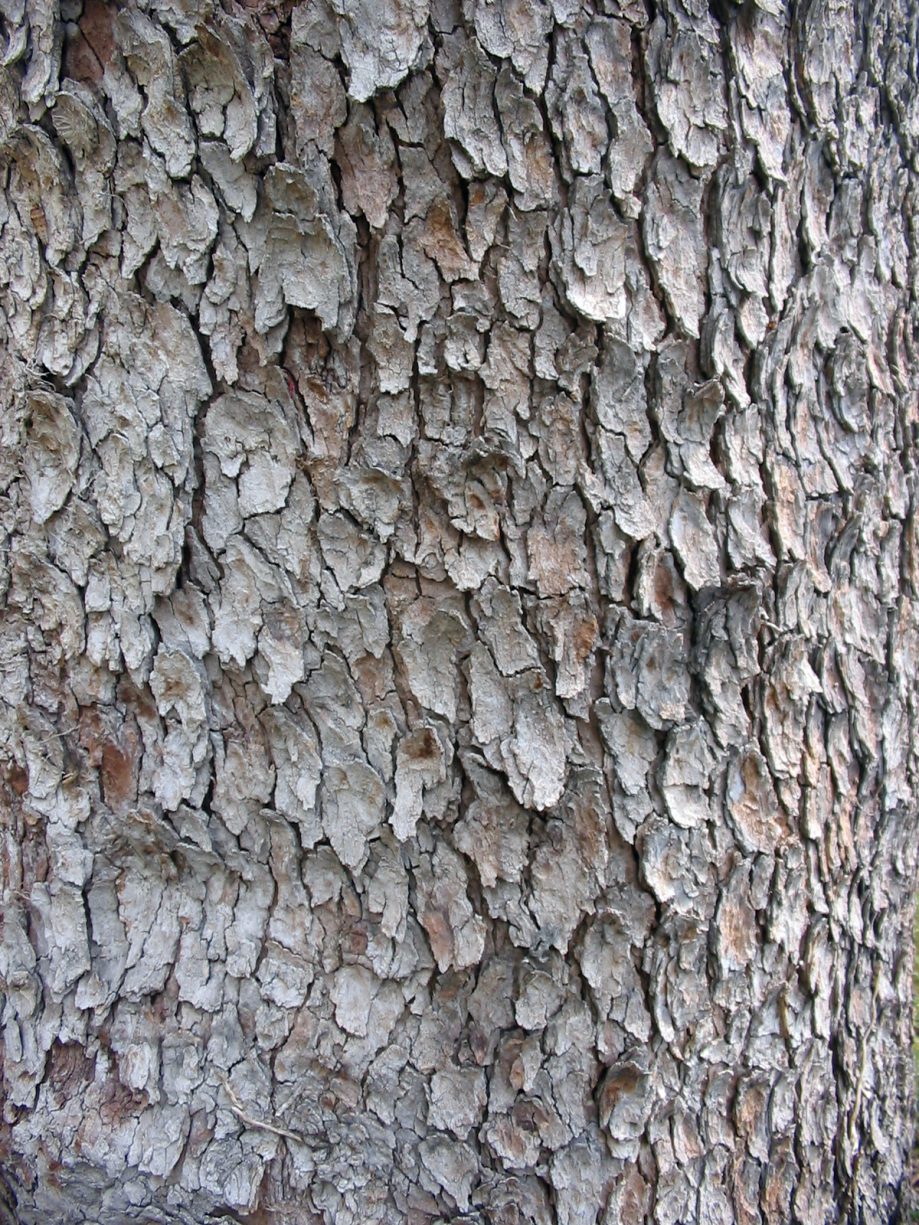Plants to be Found Along the Foss
The following is a selection of some of the most commonly seen larger flora to be found in or on the banks of the Foss. It is not meant to be a complete list, so if you find anything that is not here, why not take a good resolution photograph and submit it. We will do our best to add it to the list (with due acknowledgement). Clicking on a photograph will bring up a larger version in a new window.
Attributions for photographs added from Wikimedia Commons are given at the end of the article: those from other sources are shown below the photo concerned.
To make the list more useful, we have divided it into the following categories.
1) Plants with obvious flowers
a) In the river
b) On the bank
2) Plants with inconspicuous flowers
a) In the river
b) On the bank
3) Trees
Plants with obvious flowers
a) In the river
Yellow flag (Iris Pseudacorus) has long sword-shaped leaves and large yellow iris flowers from June to August.
Arrowhead Sagittaria sagittifolia has distinctive arrow-shaped leaves and 3-petaled white flowers, with a purple spot at the base of each petal. Water-plantain (Alisma plantago-aquatica) has long, pointed leaves a little like a large plantain, and small pale lilac flowers from June to August. Yellow water-lily (Nuphar lutea) is unmistakable with round floating leaves and large, globular yellow flowers from June to September. In winter the floating leaves die back but there are still large submerged leaves visible.Water forgetmenot (Myosotis scorpioides) is generally larger than garden forgetmenots and has bright sky-blue flowers from June to October.
Amphibious bistort (Persicaria amphibia) has long spikes of small, pink flowers. It can grow either on land or in water, when the leaves float. The land form often has very few flowers.
Floating Pondweed (Potamogeton Natans) produces both floating and submersed leaves on the same plant. The floating leaves are ovate to oblong-ovate and almost always cordate at the base. They are dark green, leathery, opaque, with translucent longitudinal veins. They are 5 to 10 cm long, pointed at the tips, and rounded at the base. See near Towthorpe May 2019.
Yellowcress, (Rorippa amphibia) Mustard Family – Brassicaceae (Cruciferae) quite a common plant, seen on the Foss June 2019.
b) On the bank
Great willowherb (Epilobium hirsutum) is very tall and hairy all over, with large purplish-pink flowers from July to September. Sometimes called Codlins and cream, apparently from the smell of the crushed leaves (codlins are apples).
Wintercress (Barbarea vulgaris) has compound leaves not unlike rocket or watercress (which are both related), and dense spikes of small yellow flowers from May to July.
Butterbur (Petasites hybridus ) has huge round leaves resembling rhubarb and long spikes of lilac flowers that appear in March before the leaves are up.
Water figwort (Scrophularia auriculata) is a tall plant with flanges on the stems and toothed leaves. Its small brownish flowers have 2 lips and are present from June to September; they are pollinated by wasps.
Hemlock (Conium maculatum) is a very tall plant with purple-spotted stems, feathery leaves and flat heads of tiny white flowers from June to August, resembling Keck or Queen Anne’s Lace. It is very poisonous.
Common comfrey (Symphytum x uplandicum) is a robust plant with bristly hairs on the leaves and stems, and coiled spikes of tubular flowers that open pink and turn blue. It flowers from May to July.
Common valerian (Valeriana officinalis) is a tall plant with compound leaves and loose clusters of pink flowers from June to August.
Meadowsweet (Filipendula ulmaria) has compound leaves, often red-tinged, and clusters of fragrant, creamy flowers from June to September.
Himalayan Balsam (Impatiens glandulifera) is a tall annual that often forms dense stands that crowd out all other plants. It has distinctive pink flowers which earn it its alternative name of Policeman’s Helmet from the shape of the spur behind the flower, and remarkable explosive seedpods. However, it is invasive and not native and should be controlled where possible.
Giant Bellflower (Campanula latifolia) is a clump-forming perennial herbaceous plant growing to 60 – 120 centimetres. The stem is unbranched and erect, the basal leaves are stalked with a heart-shaped base, while the upper leaves are stalkless, softly hairy with bluntly toothed margins. The flowers are hermaphrodite, bell-shaped, initially erect but later nodding and 35 to 60 mm long. The fruit is a hairy, nodding capsule. Its flowering period is July to September. A native to Europe and western Asia as far east as Kashmir, its natural habitat is broad-leaved woodland, coppices, parkland and forest margins. Its appearance on the Foss is likely to be as a result of escape from cultivation. (Photo Tom Fothergill)
Plants with inconspicuous flowers
a) In the river
Branched bur-reed (Sparganium erectum) and Unbranched bur-reed (Sparganium emersum) both have ball-like flowerheads on angled stems, branched in one and unbranched in the other. Branched bur-reed has iris-like leaves emerging from the water whereas Unbranched bur-reed has mainly floating leaves.
Sparganium erectum
Sparganium emsersum
Reed sweet-grass (Glyceria maxima) is a tall grass with bright green, broad leaves and green flowerheads with well separated spikelets.
Broad-leaved pondweed (Potamogeton natans) has floating oval leaves and spikes of inconspicuous flowers that projects from the water surface. The leaves are more rounded than those of Amphibious bistort and have parallel veins.
Duckweed (Lemna minor) consists of a single round leaf with a few tiny roots, floating on the water. It spreads by dividing and before the new plants separate off, there may be several together. In still water, duckweed can completely cover the surface.
b) On the bank
Reed canary-grass (Phalaris arundinacea) is another tall grass, with broad leaves and dense spikes of flowers that may be almost white, yellowish green or brownish purple. The stems and leaves stand right through the winter.
Stinging nettle (Urtica dioica) is very familiar. Both leaves and stems are covered in stinging hairs. Nettles are commonest where the ground is disturbed and fertile, especially where river dredgings are dumped, and can crowd almost everything else out, forming dense and impenetrable stands.
Trees
Crack willow (Salix fragilis) and White willow (Salix alba) are both tall, spreading trees with branches that break easily and long, thin leaves. White willow has very grey leaves, but along the Foss there are many hybrids and it is often impossible to tell the two apart. They easily regenerate from broken twigs pushed into damp ground. When the fluffy seeds are ripe in June, the ground can be covered with them.
Grey willow (Salix cinerea) is a much smaller tree with ‘pussy willow’ catkins and smaller, grey-green leaves.
Weeping willow (Salix x Babylonica) is completely distinctive from its shape. It is widely planted along the Foss.
Alder (Alnus glutinosa) is a very common riverside tree, with dark green oval leaves, that fall late in the year when still green. It has separate male and female flowers in catkins, long and reddish for the male flowers and shorter for the female, which turn into the distinctive, hard fruits. Alders have a symbiosis with bacteria that live in large nodules on their roots and that can turn nitrogen gas in the air into fixed nitrogen that the plants can use.
Sycamore (Acer pseudoplatanus) is now one of the commonest British trees, though it is not native. It has typical maple leaves that turn dark green and yellow flowers in catkins in spring.
Attributions
| Acer pseudoplatanus
|
Sycamore
|
By MurielBendel (Own work) [CC BY-SA 4.0 (http://creativecommons.org/licenses/by-sa/4.0)], via Wikimedia Commons |
| Acer pseudoplatanus
|
bark | No author provided. Alberto Salguero assumed (based on copyright claims). (http://creativecommons.org/licenses/by-sa/2.5-2.0-1.0)], via Wikimedia Commons |
| Alisma plantago-aquatica | Water Plantain | By Bff (Own work) [CC BY-SA 3.0 GFDL (http://www.gnu.org/copyleft/fdl.html)], via Wikimedia Commons |
| Barbarea_vulgaris | Wintercress | By H. Zell (Own work) GFDL (http://www.gnu.org/copyleft/fdl.html) via Wikimedia Commons |
| Conium maculatum | Hemlock
In flower |
By Mick Talbot from Lincoln (U.K.), CC BY 2.0 (http://creativecommons.org/licenses/by/2.0), via Wikimedia Commons |
| Conium maculatum | seeds | By H. Zell (Own work) GFDL (http://www.gnu.org/copyleft/fdl.html), via Wikimedia Commons |
| Epilobium hirsutum | Codlins and cream/Great hairy willow herb
|
By André Karwath aka Aka (Own work) [CC BY-SA 2.5 (http://creativecommons.org/licenses/by-sa/2.5)], via Wikimedia Commons
|
| Filipendula ulmaria | Meadowsweet
|
By Rasbak (Own work) GFDL (http://www.gnu.org/copyleft/fdl.html) via Wikimedia Commons |
| glutinosa | Alder Alnus
|
By Nikanos (selbst fotografiert von Nikanos) CC BY-SA 2.5 (http://creativecommons.org/licenses/by-sa/2.5), via Wikimedia Commons |
| Glyceria maxima | Reed sweet-grass
|
By Rasbak (Own work) GFDL (http://www.gnu.org/copyleft/fdl.html), via Wikimedia Commons |
| Impatiens glandulifera | Himalayan balsam
|
By André Karwath aka Aka (Own work) [CC BY-SA 2.5 (http://creativecommons.org/licenses/by-sa/2.5)], via Wikimedia Commons |
| Iris pseudacorus | Flag Iris in flower
LCO338 |
Jörg Hempel [CC BY-SA 3.0 de (http://creativecommons.org/licenses/by-sa/3.0/de/deed.en)], via Wikimedia Commons |
| Iris pseudacorus | Seed pods | ”Iris_pseudacorus” fruit by Pethan Houten, the Netherlands July 9, 2005 {GFDL} |
| Lemna minor
|
Duckweed
|
No author provided. Ekko assumed (based on copyright claims). [Public domain], via Wikimedia Commons |
| Close-up | Christian Fischer [CC BY-SA 3.0 (http://creativecommons.org/licenses/by-sa/3.0)], via Wikimedia Commons | |
| Myosotis scorpioides | Water forgetmenot
En masse
|
By Frank Vincentz (Own work) GFDL (http://www.gnu.org/copyleft/fdl.html), via Wikimedia Commons |
| Myosotis scorpioides | flowering | By Meneerke bloem (Own work) GFDL (http://www.gnu.org/copyleft/fdl.html) via Wikimedia Commons |
| Nuphar lutea | Yellow water-lily in flower
|
By H. Zell (Own work) GFDL (http://www.gnu.org/copyleft/fdl.html), via Wikimedia Commons |
| Nuphar lutea | En masse | By user:netanel_h (Own work) [GFDL (http://www.gnu.org/copyleft/fdl.html, via Wikimedia Commons |
| Persicaria amphibia | Amphibious bistort | Christian Fischer [CC BY-SA 3.0 (http://creativecommons.org/licenses/by-sa/3.0)], via Wikimedia Commons |
| Petasites hybridus
|
Butterbur
|
By Karelj (Own work) GFDL (http://www.gnu.org/copyleft/fdl.html)], via Wikimedia Commons |
| Phalaris arundinacea | Reed canary grass | By Franz Xaver (Own work) GFDL (http://www.gnu.org/copyleft/fdl.html)], via Wikimedia Commons |
| Phragmites australis | Common reed | By Hubert Śmietanka (Own work) [CC BY-SA 2.5 (http://creativecommons.org/licenses/by-sa/2.5)], via Wikimedia Commons |
| Phragmites australis | Close up | By Isidre blanc (Own work) [CC BY-SA 3.0 (http://creativecommons.org/licenses/by-sa/3.0)], via Wikimedia Commons |
| Potamogeton natans | Broad-leaved pondweed
|
Christian Fischer [CC BY-SA 3.0 (http://creativecommons.org/licenses/by-sa/3.0)], via Wikimedia Commons |
| Sagittaria sagittifolia | Arrowhead
In flower |
By Muriel Bendel (Own work) [CC BY-SA 4.0 (http://creativecommons.org/licenses/by-sa/4.0)], via Wikimedia Commons |
| Sagittaria sagittifolia | plant | By Karelj (Own work) [CC BY-SA 3.0 GFDL (http://www.gnu.org/copyleft/fdl.html)], via Wikimedia Commons |
| Salix alba
|
White willow
|
By Willow (Own work) GFDL (http://www.gnu.org/copyleft/fdl.html), CC BY-SA 3.0 (http://creativecommons.org/licenses/by-sa/3.0) via Wikimedia Commons |
| Salix alba
|
leaves | No author provided. MPF assumed (based on copyright claims) (http://creativecommons.org/licenses/by-sa/3.0/), via Wikimedia Commons |
| Salix babylonica | Weeping willow (planted) | By Fontema (Own work) [Public domain], via Wikimedia Commons |
| Salix babylonica | tortuosa | By Opioła Jerzy (Own work) [GFDL (http://www.gnu.org/copyleft/fdl.html), (http://creativecommons.org/licenses/by-sa/2.5-2.0-1.0)], via Wikimedia Commons |
| Salix cinerea
|
Grey willow
|
By Rasbak (Own work) GFDL (http://www.gnu.org/copyleft/fdl.html) via Wikimedia Commons |
| Salix cinerea
|
leaves | By BCB (Own work) [GFDL (http://www.gnu.org/copyleft/fdl.html), CC-BY-SA-3.0 (http://creativecommons.org/licenses/by-sa/3.0/)], via Wikimedia Commons |
| Salix fragilis
|
Crack willow
|
Andreas Eichler [CC BY-SA 4.0 (http://creativecommons.org/licenses/by-sa/4.0)], via Wikimedia Commons |
| Scrophularia auriculata | Water figwort
|
By Acabashi (Own work) [CC BY-SA 4.0 (http://creativecommons.org/licenses/by-sa/4.0)], via Wikimedia Commons |
| Sparganium emersum | Unbranched
bur-reed
|
By Stefan.lefnaer (Own work) [CC BY-SA 4.0 (http://creativecommons.org/licenses/by-sa/4.0)], via Wikimedia Commons |
| Sparganium erectum | Branched bur-reed
|
By Agnieszka Kwiecień (Nova (Own work) [GFDL (http://www.gnu.org/copyleft/fdl.html), CC BY-SA 3.0 (http://creativecommons.org/licenses/by-sa/3.0) via Wikimedia Commons |
| Symphytum x uplandicum | Common comfrey
|
By Kim Hansen [CC BY-SA 3.0 GFDL (http://www.gnu.org/copyleft/fdl.html)], via Wikimedia Commons |
| Urtica dioica | Stinging nettle
|
By H. Zell (Own work) GFDL CC BY-SA 3.0 (http://creativecommons.org/licenses/by-sa/3.0), via Wikimedia Commons |
| Valeriana officinalis | Common valerian
|
Christian Fischer [CC BY-SA 3.0 (http://creativecommons.org/licenses/by-sa/3.0)], via Wikimedia Commons |

